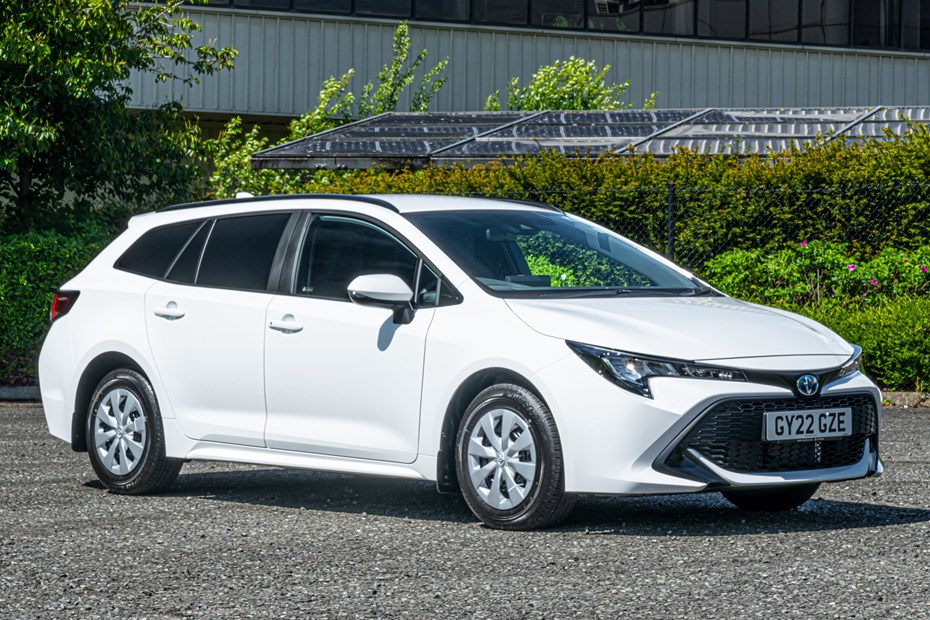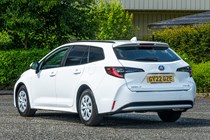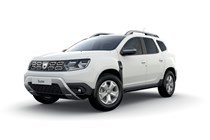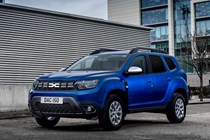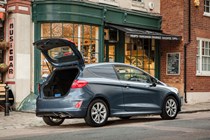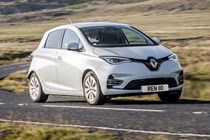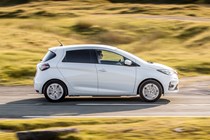A car-derived van is exactly what it sounds like – a van that’s based on a regular passenger car. They’re generally based on small cars, which makes them the among the most compact light commercial vehicles you can buy. This means they aren’t as practical as proper vans, but they’re usually far sharper to drive and come with more standard equipment.
Classic examples of a car-derived van include the Ford Fiesta Van and Vauxhall Corsavan, which gives you an indication of the dimensions this class of commercial vehicle has historically favoured. There are technical legal reasons for this, alongside the obvious practical one that is: if you wanted a bigger vehicle, you’d probably just buy a purpose-built van.
However, neither the Ford Fiesta Van nor the Vauxhall Corsavan are currently available to buy new, which has left the way open for larger alternatives, including the Toyota Corolla Commercial. Until recently there have also been a couple of commercial 4x4s that also qualify as car-derived vans. These offer many of the benefits of a traditional car-derived van, but also provide the additional advantage of being able access job sites halfway up a mountain.
On this page, we’ll explain what a car-derived van (or CDV) is and we’ll walk you through their associated tax regulations and legal considerations. We’ll also provide a list of the best car-derived vans on the market right now, which includes links to our detailed reviews. Scroll down to learn more.
What is a car-derived van?
The Department for Transport (DfT) wryly states that ‘very few vans will meet the criteria for a car-derived van’ – and those that do will be ‘similar’ to the Ford Fiesta Van. That’s to say, a small car with its rear seats removed and a load platform installed in their place. The rear side windows should also be covered or replaced entirely by solid panels so you can’t see through them.
These changes must be made to an extent that they can’t be reversed. So, the rear seats must be removed and destroyed, and the rear seat belt mountings must be disabled. This is to stop drivers from taking advantage of lower commercial vehicle tax rates and then retrofitting a set of seats and belts to get a cheap passenger vehicle.
The official legal definition is laid out in the 1984 Road Traffic Regulations Act. It says a ‘car-derived van’ means ‘a goods vehicle that is adapted as a derivative of a passenger vehicle and which has a maximum laden weight not exceeding two tonnes.’
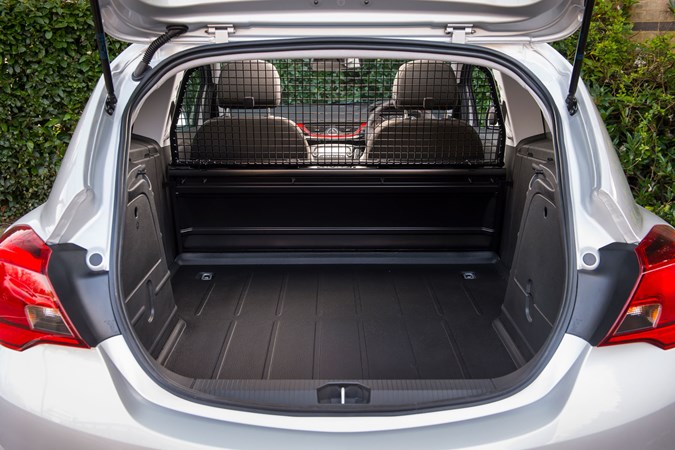
That latter part about the maximum laden weight is the reason car-derived vans are usually based on small cars. It’s also an example of government regulations being unnecessarily confusing because maximum laden weight means the same as gross vehicle weight (GVW), maximum authorised mass (MAM), and permissible maximum weight.
In simple terms, to qualify as a car-derived van, the vehicle must be based on a passenger car, but the total weight of the vehicle and everything on board – people and equipment included – can’t be legally higher than two tonnes (2,000kg).
If you’re unsure whether the vehicle you’re considering buying is a proper car derived van, check the ‘body type’ field on its V5C registration document. If it says ‘CDV,’ then it’s a car-derived van. If it says anything else, then it is not.
Are car-derived vans any good?
That depends on what job you need the vehicle to do. Given their size and weight limitations, they’re less practical than other types of van – even small ones.
However, because they’re based on cars they look smarter than most other vans. The dearly departed Fiesta Sport Van is particularly attractive. Plus, CDVs typically have higher levels of standard equipment and offer a more comfortable driving experience.
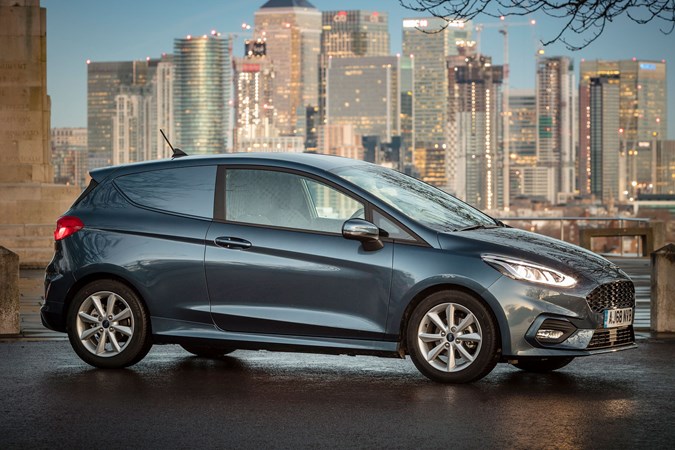
They drive exactly like their passenger-carrying counterparts, too. That makes them more approachable for those who haven’t driven a large commercial vehicle but who need a vehicle that’s more adept at carrying things than a car with its seats folded flat.
For drivers who don’t need to carry much, they have plenty of appeal. They’re also cheap to run, thanks to their lightweight construction and van tax rates.
What’s the best car-derived van?
If you want to buy new, you don’t have a lot of choice. Currently, there are just two on sale in the UK – the Toyota Corolla Commercial and the recently announced Dacia Spring Cargo.
Until autumn 2022, there were two other very notable options for buyers in the form of the Ford Fiesta Van and the Renault Zoe, but they’ve both since been axed. You can find out how the two cars compare in our Fiesta Van versus Zoe Van twin-test. The main takeaway is that the Fiesta is powered by conventional engines, while the Zoe is pure-electric.
More recently than that, you were also able to buy the Dacia Duster Commercial and the Suzuki Jimny Light Commercial Vehicle; these might look like commercial 4x4s but their maximum laden weight is under 2,000kg. The van versions of the Land Rover Defender, Land Rover Discovery and Toyota Land Cruiser don’t meet this criteria, so are only classified as commercial 4x4s.
There are plenty of car-derived vans still kicking around the used van market. Below you’ll find more details of the new and nearly new car-derived vans we’ve already reviewed, plus a couple of our favourites from the classifieds.
The Dacia Spring Cargo is so new we haven’t tested it yet, but you can read more about the passenger version in our Dacia Spring car review.
It’s based on an estate and it has a hybrid powertrain
It’s also great to drive. Like the standard Corolla, it handles neatly, and it’s fitted with punchy powertrain that serves up offering 140hp. When you’re not driving like you’re running late for your next job, it should also return an easy 50mpg. We've been running a Corolla Commercial long-term test to get to know it even better, too.
Read our full Toyota Corolla Commercial review
Pros
- Feels like a car
- Low running costs
- Smooth engine
Cons
- Small payload
- No full bulkhead
Staggering value for money and surprising off-road ability
It’s a practical little workhorse, too. Even the four-wheel drive model (which loses some storage space to the differential under the floor) has 1,559 litres of storage space and a payload of around 500kg. Its engines are cheap to maintain and fuel, too – and its interior is far more comfortable and better equipped than an equivalent van.
Read our full Dacia Duster Commercial review
Pros
- Great off-road
- Well equipped
- Good value for money
Cons
- Most models FWD
- Offset driving position
It’s a proper little Tonka toy – in more ways than one
It also isn’t the most practical workhorse. Even with its missing rear seats, the load bay is barely big enough for a toolbox – and it can only support a 150kg payload. Still, if all you need is a rough and tumble Tonka truck to get you to an awkward job site (where the tools and materials already are) it could be perfect for you. It is genuinely very capable off-road.
Read our full Suzuki Jimny Commercial review
Pros
- Hilarious fun
- Reasonably equipped
- Neat conversion
Cons
- Tiny payload
- Not that cheap to run
Quite possibly the best-driving van in the world
It knocked our socks off when it was launched. It was arguably the best CDV we’d ever seen, as it far surpassed the quality and comfort of the old Vauxhall Corsavan which went out of production in 2018. Sadly, the Fiesta has now gone the same way. Start scouring the classifieds before they all get snapped up (or run into the ground).
Read our full Ford Fiesta Van review
Pros
- Great to look at
- Better to drive
- Well equipped
Cons
- Car grade plastics
- Glass rear window
An easy way for eco-conscious businesses to go electric
Granted, you won’t get close its official maximum range of 245 miles in the winter months, but if you can charge it up at home, the running costs should be a fraction of a diesel van’s. Just bear in mind that its heavy battery limits its payload compared to the Fiesta.
Read our full Renault Zoe Van review
Pros
- Lots of creature comforts
- Five-year warranty
- Cheap to run
Cons
- Payload > 400kg
- Charging times
Car-derived van buying guide and FAQs
Where can I get a cheap car-derived van?
Perhaps one of the most surprising things about car-derived vans is that they aren’t actually that cheap. Despite having smaller load areas, they often cost more than entry-level versions of proper vans from the same manufacturer.
If you want a cheap car-derived van, the best thing to do is look for a second-hand one – where you’ll also find there’s a much greater choice of models. Not only will you find examples of the Vauxhall Corsavan, but also the Renault Clio Van, the Mini Clubvan, two older generations of Fiesta Van and the slightly larger Vauxhall Astravan. You can read reviews of them all on Parkers, too.
Another way to cut costs might be to look at leasing rather than buying outright.
Is there an official list of car-derived vans?
HMRC publishes an official list of car-derived vans (and combi vans – which is a whole other can of worms), but it was last updated in 2015. So it is massively out of date.
Given this, we thought we’d ask Her Majesty’s Revenue and Customs if it had any plans to update the list. This is the statement we got in reply:
‘The 2015 guidance is the most recent version of the list. We are currently working with the Society of Motor Manufacturers and Traders (SMMT) to ensure we have the most current information, and we will then update the published list.’
We were given no timescale for when this might happen. Another nine years, perhaps?
Is a commercial 4x4 a car-derived van?
You’ll see some lists of car-derived vans that include commercial 4x4s other than the Dacia Duster and Suzuki Jimny mentioned above – and while it’s true that these are also based on passenger vehicles, they do not technically come under the legal definition of a car-derived van or CDV. Aside from the Duster and the Jimny, they don’t meet the two-tonne maximum laden weight rule (they’re heavier).
Is the Citroen Berlingo a car-derived van?
The Citroen Berlingo comes as both a passenger carrying MPV and a van, but the current version doesn’t meet the definition of a car-derived van.
Just to be confusing, it’s possible that some – but not all – older versions do meet the definition. However, when we contacted Citroen UK for clarity, and the head of product did not believe they were ever classed as anything but vans.
Similar questions people ask include ‘Is the Volkswagen Caddy a car-derived van?’ and ‘Is the Ford Transit Courier a car-derived van?’ Again, although there are passenger versions of these models, the vans are not technically car-derived.
If you want to be sure, you can check the ‘body type’ section of the V5C registration document. Keep reading.
Is CDV a legal term?
CDV is the official acronym for car-derived van, and is what you’ll see on the V5C registration document under ‘body type’ if the vehicle is officially and legally a car-derived van.
This is important, because if it says any other type of van here you will be subject to different speed limits. As we shall now explain.
What’s the speed limit for a car-derived van?
One of the most important distinction between car-derived vans and other types of vans is that CDVs are legally allowed to travel at the same speeds as regular passenger cars on all roads.
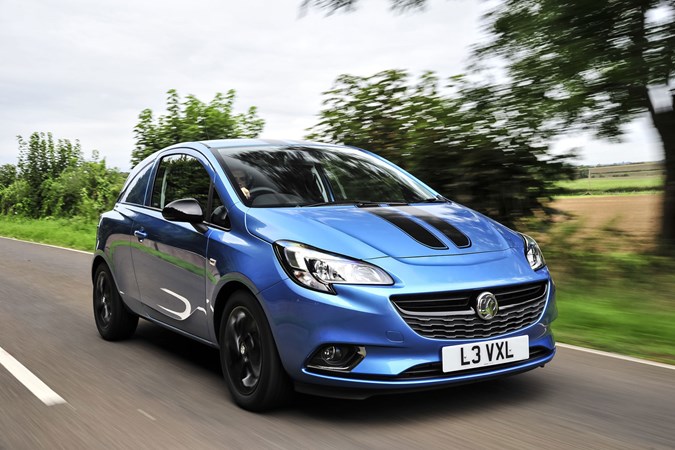
You can read more about this subject on our dedicated van speed limits page, but other types of van are legally restricted to 10mph less than cars on national limit roads and dual carriageways (though can travel at 70mph on motorways).
How much does it cost to tax a car-derived van?
Car-derived vans are subject to the same fixed-rate tax levels as any other light commercial vehicle, which means there’s no tax advantage to opting for one over a larger, proper van. However, that doesn’t mean all car-derived vans cost the same to tax.
Some older models will fall into different tax brackets due to their age or emissions levels – you can read details of this in our van tax guide – while the Renault Zoe Van will be cheaper than other CDVs because it’s powered by an electric motor. But this is the same for all electric vans versus petrol and diesel vans at the moment (the law is set to change slightly in 2025, but there will still be tax advantages to electric vans even then, something the new Dacia Spring Cargo will also be able to take advantage of).
Just so you know, we may receive a commission or other compensation from the links on this website - read why you should trust us.


